Matsuo Bashō

Matsuo Bashō (松尾芭蕉, 1644 – 28 November 1694) was a major Japanese poet , primarily known for his achievements in the haikai no renga and haiku (as it would become known later) forms, and his poetic diaries .
- 1.1 Oku no Hosomichi (1702)
- 1.2 Individual poems
- 1.3 Statements
- 2 External links

Quotes [ edit ]
Oku no hosomichi (1702) [ edit ].
- Matsuo Bashō, Narrow Road to the Interior and other writings , Boston, 2000, p. 3 (Translation: Sam Hamill)
- yuku haru ya tori naki uo no me wa namida
- Matsuo Bashō, Narrow Road to the Interior and other writings , Boston, 2000, p. 4 (Translation: Sam Hamill)
- Matsuo Bashō, The Narrow Road to Oku , Tokyo, 1996, p. 23 (Translation: Donald Keene)
- Donald Keene, Travelers of a Hundred Ages , New York, 1999, p. 310 (Translation: Donald Keene)
- natsukusa ya tsuwamonodomo ga yume no ato
- Donald Keene, Travelers of a Hundred Ages , New York, 1999, p. 316 (Translation: Donald Keene)
- Matsuo Bashō, The Narrow Road to Oku , Tokyo, 1996, p. 87 (Translation: Donald Keene)
- Also: Classical Japanese Database , Translation #222
- shizukesaya iwa ni shimiiru semi no koe
- Donald Keene, World Within Walls: Japanese Literature of the Pre-Modern Era, 1600-1867 , New York, 1999, p. 89 (Translation: Donald Keene)
Individual poems [ edit ]
- asagao ni ware wa meshi kû otoko kana
- Classical Japanese Database , Translation #174 (Translation: Reginald Horace Blyth)
- kyou nitemo kyou natsukashi ya hototogisu
- Classical Japanese Database , Translation #55 (Translation: Robert Hass)
- Basho, On Love and Barley: Haiku of Basho , London, 1985, p. 43 (Translation: Lucien Stryk)
- furu ike ya kawazu tobikomu mizu no oto
- Classical Japanese Database , Translation #64 (Translation: Reginald Horace Blyth)
- (Translation: Sam Hamill)
- Basho, On Love and Barley: Haiku of Basho , London, 1985, p. 58 (Translation: Lucien Stryk)
- Matsuo Bashō, The Narrow Road to the Deep North and Other Travel Sketches , London, 1966, p. 9 (Translation: Nobuyuki Yuasa)
- yagate shinu keshiki wa miezu semi no koe
- tabi ni yande yume wa kareno wo kake-meguru
- Bashō's last poem, written while he was dying of a stomach illness. (Translation: Robert Hass)
- Basho, On Love and Barley: Haiku of Basho , London, 1985, p. 81 (Translation: Lucien Stryk)
- (Unknown translator)
- Reported as Basho's death poem.
Statements [ edit ]
- Miru tokoro hana ni arazu to iu koto nashi, omou tokoro tsuki ni arazu to iu koto nashi
- Classical Japanese Database , Translation #172 (Translation: Reginald Horace Blyth)
- kojin no ato wo motomezu, kojin no motometaru no tokoro wo motome yo
- from 「柴門の辞」"Words by a Brushwood Gate" (also translated as "The Rustic Gate") (Unknown translator)
- sabi wa ku no iro nari. kanjaku naru ku wo iu ni arazu. tatoeba, roujin no katchuu wo taishi senjou ni hataraki, kinshuu wo kazari goen ni haberitemo, oi no sugata aru ga gotoshi.
- Classical Japanese Database , Translation #42 (Translation: Robert Hass)
- Classical Japanese Database , Translation #41 of a Saga Diary excerpt (Translation: Robert Hass)
- Genjūan no Fu ("Prose Poem on the Unreal Dwelling") in Donald Keene, Anthology of Japanese Literature , p. 374 (Translation: Donald Keene)
- Matsuo Bashō, Collected Haiku Theory , eds. T. Komiya & S. Yokozawa, Iwanami, 1951 (Unknown translator)
External links [ edit ]
- Classical Japanese Database , featuring various poems by Bashō in original and translation
- "Matsuo Bashô: Frog Haiku" , featuring 31 translations and one commentary of the haiku
- Poets from Japan
- 1644 births
- 1694 deaths
- Buddhists from Japan
Navigation menu
- Subscribe Online Courses
Magazine | Reviews
Narrow Road to the Interior
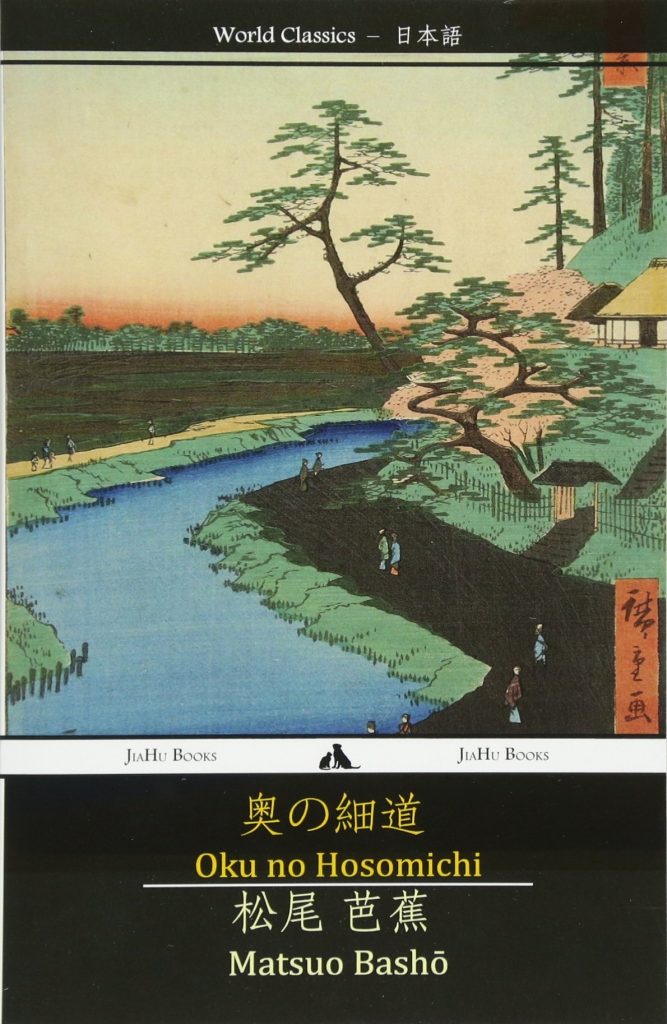
Narrow Road to the Interior By Matsuo Basho. Translated by Sam Hamill. Shambhala Publications: Boston, 1991. 105 pp. $10.00 (paperback).
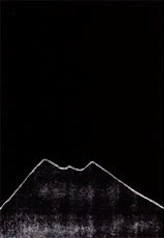
As Sam Hamill reminds us in the preface to this lucid and engaging translation, Basho’s haibun —brief prose combined with haiku —is a “return to natural, spiritual, and literary origins.” Hamill’s translation, a gift of careful attention, does not separate poetry from spiritual practice. And, Basho becomes our guide on the way of insight.
Written between 1690 and 1694, Oku-no-hosomichi is based on the journey Basho began in cherry blossom season in 1689, crossing the Shirakawa Barrier into northern Honshu, moving south along the Japan Sea to Ogaki in the autumn. Like the sun and moon which he calls “eternal travelers,” Basho is a wanderer. For him, “each day is a journey, and the journey itself is home.” Having left his small house and students and throngs of admirers, Basho embraces mujo , or impermanence, in a concrete way—he becomes a traveler; no fixed abode, no fixed “self.” Visiting places made famous by poems, Basho enters the spirit of each place more fully by remembering the verses associated with it. Poem and place bring each other into being.
The beauty of Hamill’s translation is that it gives us a clear view of each situation. For those readers willing to go further, Hamill provides brief notes. And, he translates in such a way that the hidden comes closer into view.
In the shade of a huge chestnut at the edge of town, a monk made his hermitage a refuge from the world. Saigyo’s poem about gathering chestnuts deep in the mountains refers to such a place. I wrote on a slip of paper: The Chinese character for chestnut means “west tree,” alluding to the Western paradise of Amida Buddha; the priest Gyoki, all his life, used chestnut for his walking stick and for the posts of his home. Near the eaves the chestnut blooms: almost no one sees.
Readers begin the passage firmly and allusively located: Buddha took refuge under the bo tree and the monk in the refuge of the chestnut. Saigyo, a monk poet, wrote a poem about such a place, we’re told. In the original, and as far as I know in other translations, Saigyo is not named directly. Basho’s more contemplative Japanese readers would have “felt” Saigyo’s presence, for as William LaFleur tells us in The Karma of Words , Saigyo’s name derives from “west” and “going” and is, then, the “unspoken fulcrum” in a passage about moving toward enlightenment, toward dependence on Amida Buddha. The concluding haiku is a kind of shock. Almost no one sees the chestnut blooms and almost no one sees that enlightenment is here and now. By overtly naming Saigyo, Hamill points more clearly to one of the root sources in Basho’s contemplation. This is the translator’s gift, and it helps us to locate meaning not in single symbols—there are no symbols—but in the relationship of the images and phrases, be they spoken aloud or spoken silently by Basho.
Telling us what happened at a shrine on Mount Nikko, whose name means “bright beams of sun,” Basho muses gratefully on the founder’s generosity, and offers a concluding haiku. Here are three translations:
Sam Hamill:
Speechless before these budding green spring leaves in blazing sunlight
Nobuyuki Yuasa:
It was with awe That I beheld Fresh leaves, green leaves Bright in the sun
Cid Corman:
O glorious green leaves, young leaves sunlight
Readers may make their own comparisons. I’m struck by the economy of Hamill’s translation when a mimetic economy is called for: “Speechless before.” I’m delighted by the expansive “scattering” of adjectives that deepen meaning with an aural pun in English on Buddha, delighted by the choice of spring (that adjective which is a noun which is a verb) to give us young leaves in the act of springing green. For me these verbal strategies result in a vernacular that is muscular, available, authoritative. It is language that closes the distance between us and Basho. We journey, standing still in contemplation, with that most human of poetic masters and seekers. And with Hamill’s translation in a near pocket-sized book, handsomely illustrated by Stephen Addis, we may be quite concretely moved to enact the journey that is home. Such is the magic of a fine translation.
Thank you for subscribing to Tricycle! As a nonprofit, we depend on readers like you to keep Buddhist teachings and practices widely available.
Subscribe now to read this article and get immediate access to everything else.
Already a subscriber? Log in .
Subscribe Today
Tricycle is more than a magazine.
Subscribe for access to video teachings, monthly films, e-books, and our 30-year archive.
Weekly Newsletter
The latest from tricycle to your inbox and more.
Please check your email to confirm your subscription.
Would you like to sign up for our other mailing lists?
- The Tricycle Newsletter A weekly update on everything you need to know on tricycle.org
- Three Teachings Buddhist teachings to your inbox every Thursday
- Daily Dharma Morning wisdom to wake you up
- Learn More Course announcements, offers, and events from our partners
- Meditation Month Weekly updates and guided meditations from a Buddhist teacher throughout the month of March
By continuing, you agree to Tricycle’s Privacy Policy and Terms of Service .
Help us share Buddhist teachings
Tricycle is a nonprofit that depends on reader support.
Walking as Artistic Practice
Matsuo bashō.
Matsuo Basho – Narrow Road Map ( credit )
“The best way to discover a place, and oneself, is to walk, as Japanese haiku master Matsuo Basho set out to do in the spring of 1689. His Oku-no-hosomichi ( Narrow Road to the Deep North ), a travelogue in poetry and prose, charts his 2,400km journey, mostly on foot, from Edo (modern-day Tokyo) to the Tohoku region. For five months, Basho trekked from countryside to coast and forest, spending nights at temples and inns, and imbibing the simple beauty around him.” ( credit )
In one of its most memorable passages, Bashō suggests that “every day is a journey, and the journey itself home .”…”Today thousands of people pilgrimage to Basho’s birthplace and burial shrine and travel parts of Bashos Trail. After three centuries his Narrow Road, in print in English and many other languages, still speaks to readers around the world.” … “
Whatever its source–Basho lived a turbulent life in a changing Japan–his melancholy was an intensifying element in much of his writing and an important part of what, in the end, propelled him on his journeys.
Few details are known about Basho’s early life, but he is thought to have been born in 1644 in the castle town of Ueno, southeast of Kyoto. His father, a minor samurai, may have earned his keep teaching children to write. Many of Basho’s siblings probably became farmers.
Basho, however, acquired a taste for literature, perhaps from the son of the local lord, whose service he joined. He learned the craft of poetry from Kigin, a prominent Kyoto poet, and early in his life was exposed to two lasting influences: Chinese poetry and the tenets of Taoism. After his master died, Basho began spending time in Kyoto, practicing a form called haikai, consisting of linked verses.
In Bashos time, the first verse in haikai was evolving into a poetic idiom of its own–haiku, whose unrhymed phrases of five, seven, and five syllables are meant to capture the essence of nature. Basho published his first haiku under various names, each having some personal significance. One, Tosei, or “green peach,” was an homage to the Chinese poet Li Po (“white plum”).
In his late 20s Basho moved to Edo (now old Tokyo), a newly established city in great social flux, with a fast-growing population, robust trade, and, for Basho, literary opportunity. Within a few years he had gathered the coterie of students and patrons who formed what came to be known as the Basho School.
In 1680 one of his students built the poet a small house near the River Sumida, and soon after, when another presented him with a stock of basho tree (a species of banana), the poet started writing under the name that has endured: Basho. Credible accounts of his life hold that during this period he was plagued with spiritual doubt and took up the study of Zen Buddhism. His despair only deepened in 1682, when his house burned to the ground in a fire that obliterated much of Edo.”… ”
In 1684 Basho made a months-long journey westward from Edo, which occasioned his first travel account, Journal of a Weather-Beaten Skeleton. In Basho’s day travel was by foot and lodging was primitive. But despite these rigors he set out again in 1687 and a third time in 1687-1688, journeys recounted in Kashima Journal and Manuscript in a Knapsack. Both were written in a genre that Basho profoundly refined–haibun, a mixture of haiku and prose. The poetic travel works and the strenuous sojourns that inspired them added luster to Basho’s reputation.
Yet in the autumn of 1688, in his mid-40s, Basho confided to friends that he still felt the world was too much with him. Exhausted from the incessant demands of students and of his literary celebrity, he said that he “felt the breezes from the afterlife cross his face.” He began planning a pilgrimage to sites important for their literary, religious, or military history–places he wanted to see before he died. He intended to leave that winter, but his friends, worried about his frail health, begged him to wait until spring. Finally, in May 1689, accompanied by his friend and disciple Sora and carrying only a backpack, writing materials, and changes of clothing, Basho set out, determined yet again to become a hyohakusha–“one who moves without direction.” He walked for five months through the uplands and lowlands, villages, and mountains north of Edo and along the shores of the Sea of Japan. It was this wonderfully episodic sojourning that produced his masterwork, Narrow Road to a Far Province. “It was as if the very soul of Japan had itself written it,” said the early 20th-century Buddhist poet Miyazawa Kenji.
The book is a spiritual journey, synonymous with taking a Buddhist path, shedding all worldly belongings and casting fate to the winds. But the physical journey had a practical side: Basho made his living in part as a teacher, and as he traveled, any number of far-flung disciples were happy to host the master and receive lessons in poetry.”… “In the intervening centuries, Basho has become many things to many people–bohemian sage, outsider artist, consummate wayfarer, beatific saint, and above all a poet for the ages. In his Narrow Road, Basho seamlessly plaits together self-deprecating humor, logistical detail, Buddhist compliance, painterly description, and even raunchy complaint (“Fleas and lice biting; / Awake all night / A horse pissing close to my ear”). At the same time, his book provides a kind of timeless spiritual map for the traveler. Helen Tanizaki once characterized Basho this way: “He’s like a quirky philosopher tour-guide who pretty much leaves readers alone to experience traveling in those remote places for themselves. Rather than trying to account for things, he just feels the obligation to take note of them, a vast striving for connection.””
Credit for above: Norman, Howard. “On the Trail of a Ghost.” National Geographic 213, no. 2 (February 2008): 136–49. //search.ebscohost.com/ login.aspx?direct=true&db=aph& AN=28572143&site=ehost-live .
Basho’s Travel Memoir, “The Narrow Road of the Interior”
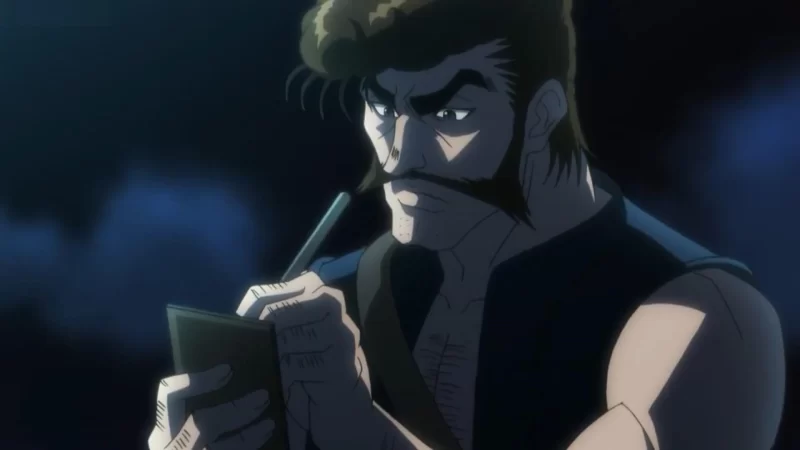
In 1684, he left Edo to visit his mother’s grave at Ueno. This journey appears to frame his work. We have to keep in mind that travel wasn’t easy. While Japan had a well-developed road system, travelers still had to endure weather, bandits, wild animals, dust, and the strain of long-distance walking. However, Basho seemed to relish the road-life. In 1687, he took a year-long journey that encompassed Ueno, Yoshino, Waka-no-ura and other areas. Much of his travels were practical. He would stay with students and patrons and compose poetry along the way. Basically, Basho took regular book tours. The Narrow Road of the Interior covers his travels of 1689. Here’s a list of his travel memoirs: The Journey of 1684, A Journey to Kashima Shrine, Backpack Notes, A Journey to Sarashina, and The Narrow Road of the Interior. Basho’s travel journals helped inspire ukiyo-e, such as Utagawa Hiroshige’s The Fifty-three Stations of the Tokaido and various other travel series.
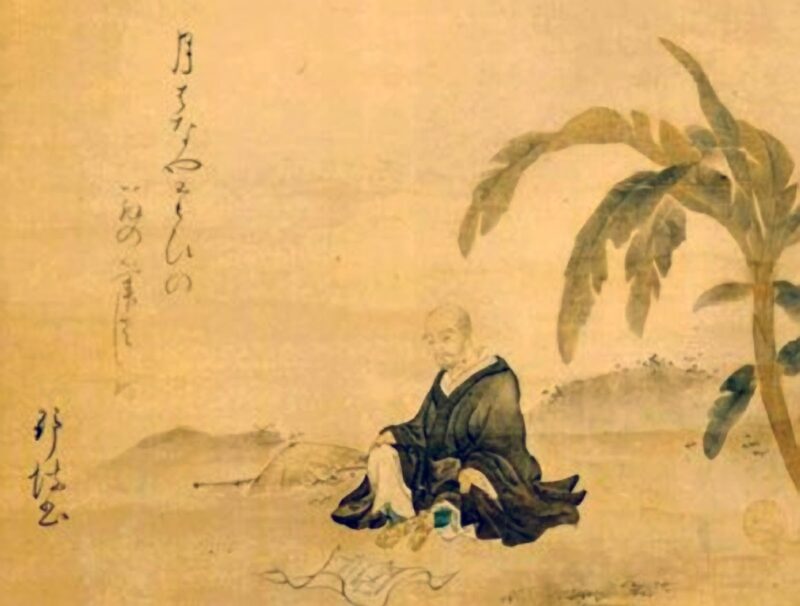
The Narrow Road of the Interior isn’t a journal as we think of it. While it teems with details and Basho’s experiences, it is partially fiction. The protagonist isn’t Basho, although the character channels Basho’s experience of failing health and travel hardships. The old man of Narrow Road wants to live like one of the wandering poets that fill Japanese literature. Basho, on the other hand, traveled to spread his brand of poetry, teach students, and secure patrons. He likely had an easier time traveling than he lets on since many of his associates were wealthy. We know this thanks to a diary kept by Basho’s traveling companion Sora.
Narrow Road has a floating quality to it, much like other works of the Edo period. It taps into the long literary tradition of focusing on fleeting moments and chance encounters. Basho’s poetry often captures singular moments. Here is the beginning to give you a feel for how it reads:
The sun and the moon are eternal voyagers; the years that come and go are travelers too. For those whose lives float away on boats, for those who greet old age with hands clasping the lead ropes of horses, travel is life, travel is home. And many are the men of old who have perished as they journeyed. I myself fell prey to wanderlust some years ago, desiring nothing better than to be a vagrant cloud scudding before the wind. Only last autumn, after having drifted along the seashore for a time, had I swept away the old cobwebs from my dilapidated riverside hermitage. But the year ended before I knew it, and I found myself looking at hazy spring skies and thinking of crossing Shirakawa Barrier. Bewitched by the god of restlessness, I lost my peace of mind; summoned by the spirits of the road, I felt unable to settle down to anything. By the time I mended my torn trousers, put on a new cord on my hat, and cauterized my legs with moxa, I was thinking only of the moon at Matsushima.
The introduction layers traditional Japanese literary symbols and philosophies. For example “my dilapidated riverside hermitage” references the ideas of wabi-sabi, of the beauty of aloneness and ruin. Likewise, Basho’s reference to the moon of Matsushima ties with all the other literary moon references. Japanese literature teems with what we would call hyperlinks. However, you don’t need any of these asides to understand Narrow Road . It offers an immediate, journal-feeling read. It is often hard to remember that the main character isn’t fully Basho but still has Basho’s observations and some of his sensibilities. This tension, and my desire to tease out what was Basho and what was not, made this read fun. Basho’s descriptions are also wonderful:
At one of the Three Barriers, Shirakawa has always attracted the notice of poets and other writers. An autumn wind seemed to sound in my ears, colored leaves seemed to appear before my eyes–but even the leafy summer branches were delightful in their own way. Wild roses bloomed alongside the whiteness of the deutzia, making us feel as though we were crossing snow. I believe one of Kiyosuke’s writings preserves a story about a man of the past who straightened his hat and adjusted his dress there. Sora composed this poem: With deutzia flowers we adorn our hats–formal garb for the barrier.
All of the seasons play into this passage. Sora’s poetry appears throughout the Narrow Road as well. He and the old man Basho inhabits dash off a poem or two at each major location or landmark they reach. However, the work remains mostly prose. You will also read poems attributed to other people the travelers meet along the way, such as those one attributed to a Kyohaku:
Late cherry blossoms: please show my friend the pine tree at Takekuma
In many sections, Narrow Road reads almost like a travel brochure trying to entice people to visit a certain area. At times Basho speaks of ill health–he did suffer from poor health. Sometimes these episodes drive him to stay at an inn where he accounts of gossip he overhears. These scenes break up the pattern of traveling to a landmark and composing a poem. The effect makes the work read much like the travel journal it poses to be. It isn’t as personal or as warm as other journals like the Pillow Book of Sei Shonagon . Instead, Narrow Road teems with imagery. It is also more accessible. You don’t need to be as versed in references to understand what Basho is saying. While Narrow Road of the Interior isn’t a diary, it has the feel of one. Basho’s travel journals aren’t as well-known outside of Japan as his poetry, and that is a shame. Give this a read if you are interested in Basho or traveling in Japan.
Craig McCullough, Helen (1990) Classical Japanese Prose. Stanford University Press.
4 thoughts on “ Basho’s Travel Memoir, “The Narrow Road of the Interior” ”
I’m somewhat partial to Issa, though Bashō can be credited with much of what came to define the form… one with which there’s a certain contemplative loneliness implied. Early 5-7-5, 7-7 “tanka” started as the veiled back-and-forth messages of lovers, evolving into the “renga” of exchanged wit between temple monks (and sometimes nuns). But restricting an entire poem to the Zen of just the “hokku” (the first stanza) implied that the line had been written to no one.
The translations are tricky. Sometime, I think it’s best to dispatch the Japanese rhythm in order to preserve the meaning.
蝶と共に吾も七野を巡る哉 Chō to tomoni ware mo nana no o meguru Kana. A butterfly my companion, through seven fields we wander! — Kobayashi Issa, 1795
Rhythm and tone are lost on me anyway :D. I enjoy the poems of monks. They are often quite funny! Zen monks were surprisingly snarky.
Been meaning to read more of Basho, in particular his prose. Thanks for yet another well-written entry.
Basho remains surprisingly fresh. Of course, that is also thanks to good translators!
Leave a Reply Cancel reply
Your email address will not be published. Required fields are marked *
Notify me of follow-up comments by email.
Notify me of new posts by email.
Currently you have JavaScript disabled. In order to post comments, please make sure JavaScript and Cookies are enabled, and reload the page. Click here for instructions on how to enable JavaScript in your browser.
GRACIOUS QUOTES
28 inspirational matsuo basho quotes (haiku), top 10 most famous matsuo basho quotes (best).
“The moon and sun are travelers through eternity. Even the years wander on. Whether drifting through life on a boat or climbing toward old age leading a horse, each day is a journey, and the journey itself is home.” Matsuo Basho

8 Inspirational Matsuo Basho Quotes About Nature
“Make the universe your companion, always bearing in mind the true nature of things – mountains and rivers, trees and grasses, and humanity – and enjoy the falling blossoms and the scattering leaves.” Matsuo Basho
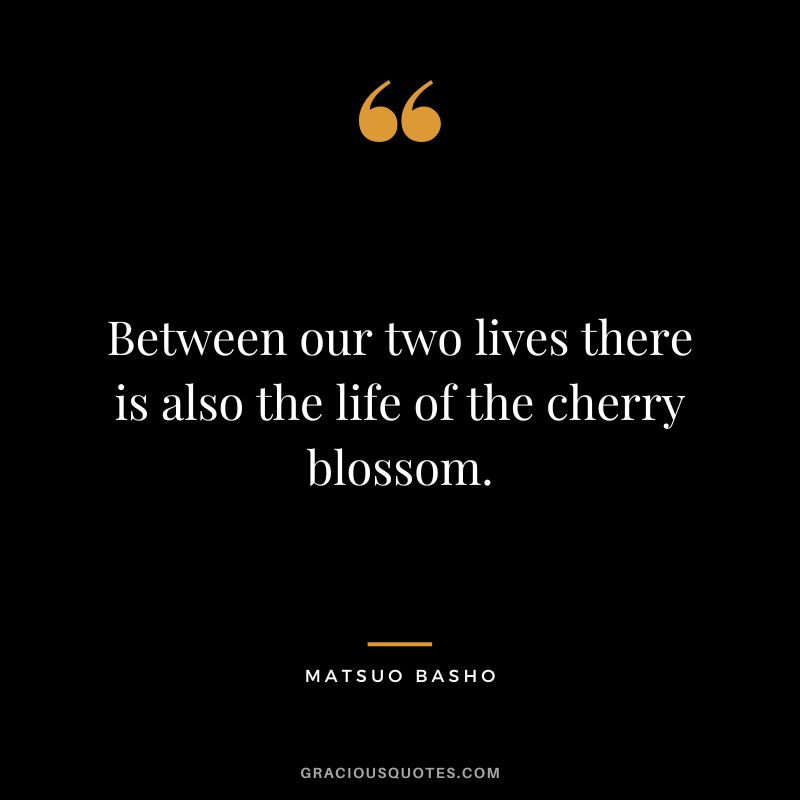
6 Wise Matsuo Basho Quotes About Poems and Learning
“When composing a verse let there not be a hair’s breath separating your mind from what you write ; composition of a poem must be done in an instant, like a woodcutter felling a huge tree or a swordsman leaping at a dangerous enemy.” Matsuo Basho

“Go to the pine if you want to learn about the pine, or to the bamboo if you want to learn about the bamboo. And in doing so, you must leave your subjective preoccupation with yourself. Otherwise you impose yourself on the object and you do not learn.” Matsuo Basho

“Operating superficially, the mind is random in its activity and stale in its insights and images. However, with practice and experience the mind is freed from the skull, and the fresh and new can appear as though for the first time.” Matsuo Basho
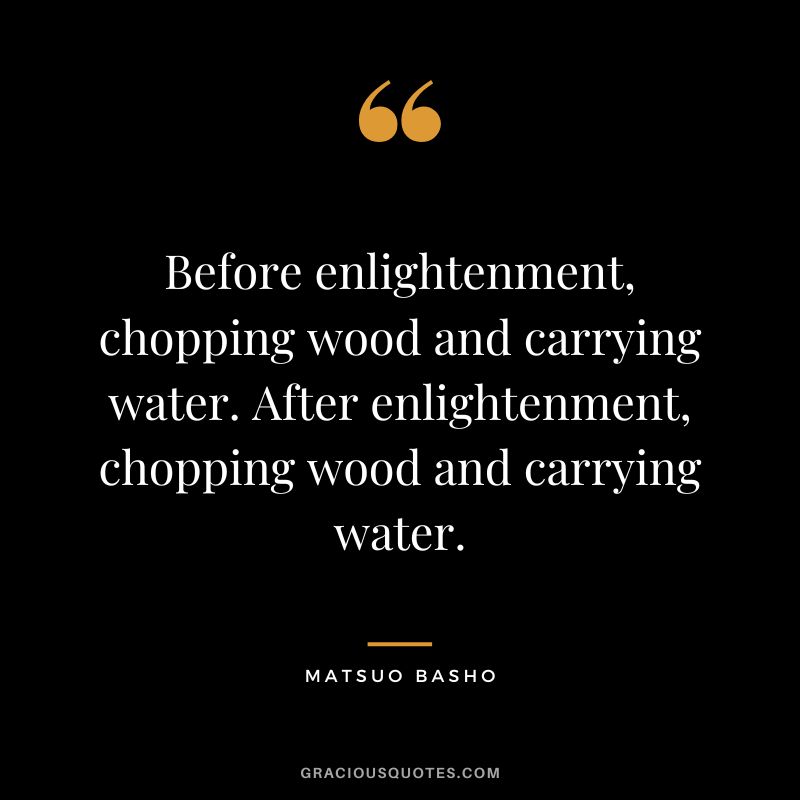
4 Matsuo Basho Quotes on Life and Death
“In this poor body, composed of one hundred bones and nine openings, is something called spirit, a flimsy curtain swept this way and that by the slightest breeze. It is spirit, such as it is, which led me to poetry, at first little more than a pastime, then the full business of my life. There have been times when my spirit, so dejected, almost gave up the quest, other times when it was proud, triumphant. So it has been from the very start, never finding peace with itself, always doubting the worth of what it makes.” Matsuo Basho

(MUST READ) Basho: The Complete Haiku
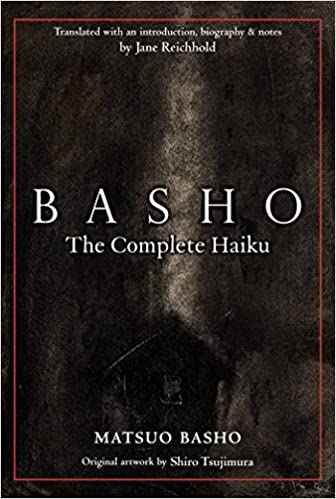
- Top 56 Most Inspiring Quotes on Willpower (WIN)
- 91 Most Uplifting Quotes for Hard Times (LIFE)
- 67 Inspirational Weightlifting Quotes (STRONG)
- 59 Motivational Cycling Quotes to Inspire you (FIT)
- Top 65 Inspirational Running Quotes (HEALTH)
- 106 Inspirational Nassim Nicholas Taleb Quotes (WISDOM)
- 34 of the Best George Steiner Quotes (LANGUAGE)
- 66 Inspirational Queen Elizabeth II Quotes (LOVE)
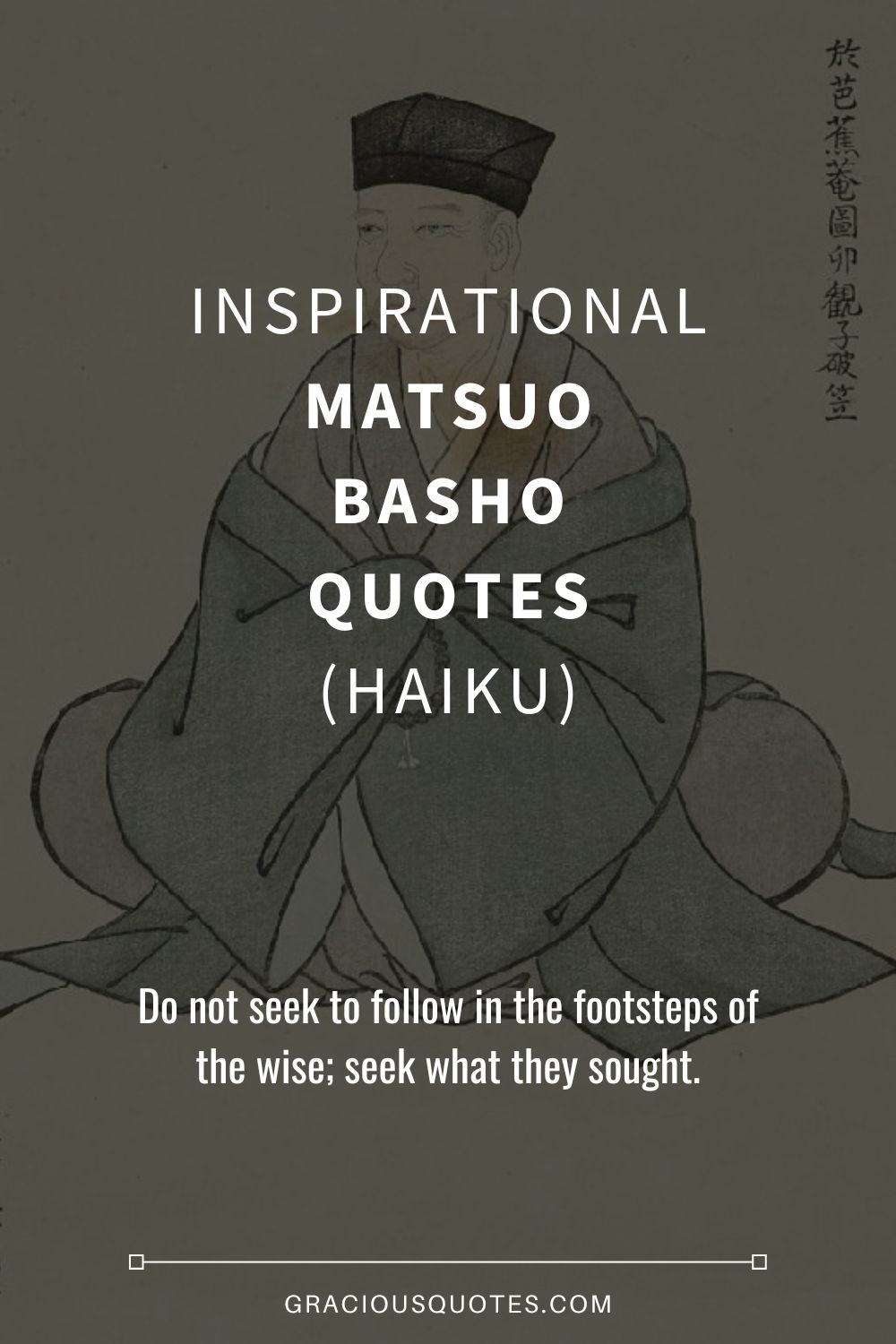

Top 80 Inspirational Work Quotes (HAPPINESS)
90 inspirational quotes about books (read).
Transit Notes
A journal of discoveries made while "wavering between the profit and the loss, in this brief transit where the dreams cross." T.S. Eliot, Ash Wednesday
Monday, August 2, 2010
Basho: the journey itself is home.

The moon and sun are eternal travelers. Even the years wander on. A lifetime adrift in a boat or in old age leading a tired horse into the years, every day is a journey, and the journey itself is home.
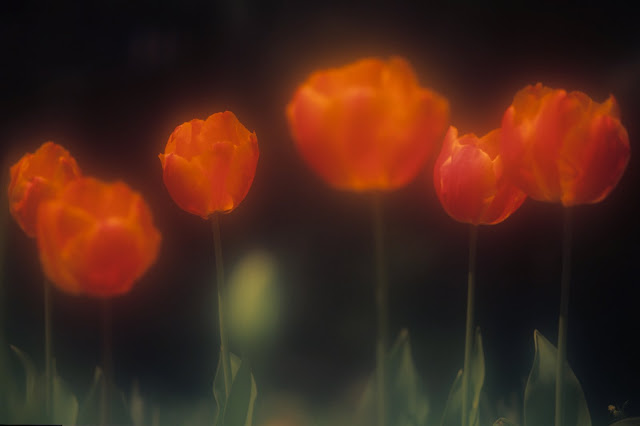
41 comments:

Perfectly beautiful, especially paired with your tremendous photographs. This morning -- Hot as a brand but hanging laundry suddenly a breeze.

To Ruth, Thanks for the nice comments. Cool for a change here Dry grass hears whisper of hope A cardinal darts.

George, both the words and the photography are so very beautiful that I want them, printed out, on the wall of my study so that I can refer to them every day.

Both words and photographs are utterly beautiful, I shall come back and spend more time absorbing them both. Thank you for a lovely post.

Stunning pairings George! So I guess one could then say: Transit Notes are sent From home, that welcoming place Of Wabi-Sabi.
To Pat, Thanks for the lovely comments. Reality now Speaks words on Wensleydale walls Fresh eggs from new chicks
To Rowan, Thanks for the kind note. Glad you liked the post. Coming and going Seasons leaving gifts of change Circle of the year
To Bonnie, Thanks for your nice comments and the special gift of a haiku verse. Wabi-sabi true The Tao and a taste of Zen Life peels the apple

What an utterly wonderful post—lines of wisdom and grace paired with magnificent images from a soul-connected eye. You are the real deal, my friend…
To Grizz, Delighted that you have enjoyed this post. I am both honored and humbled by your comments. I love your expression, "soul-connected eye." I don't know if it is connected well enough, but I keep on trying. As you know as a photographer, the clicking is secondary to the seeing. River and seasons change Not the small cottage witness Incorrigible
Second to Weavers comment...and for the first time I'm having computer envy...I want a bigger screen...so I can sit further back and enjoy the lines with the pictures.. Wonderful post.
To Karin, Thanks for the nice comments. Computer problem Solved by looking out the window Sun on the bird's wing

Very enjoyable! Beautiful words and photos! "Home is both movement and stillness, the stillness in our movement and the movement in our stillness"...such meaningful words for me.
This comment has been removed by the author.
To Wanda, Thanks so much for the nice comments, especially about the lines on movement and stillness. It's paradoxical but true, at least for me. Moments of your life Framed in captured morning light Starbursts miles away
Days at the Lake Then, home again,Internet, And charming haiku. Not really poetry, just history. Thanks!

A post with echoes of Nature - the photos seem to embody the lines "the stillness in our movement and the movement in our stillness". As I write this, it's raining here in the mountains - a cold rain that signals change.

Hi George I enjoyed your Basho walk through haiku and fine imagery. Walking the countryside through small villages in Japan was one of the highlights of my life. Composing haiku as we walked seemed a natural thing to do. At nights in old traditional country inns, sitting on the tatami, after superb dinners we would share our haiku... Two of my favourite Basho Haiku follow... Long conversations beside blooming irises Joys of life on the road The lillies the stems, just as they are the flowers, just as they are... and for you from me... Across vast oceans though seasons and cultures change we join through haiku Happy haiku days
To Kristi, Thanks for the visit and nice comments in haiku. It's all poetry Lake days then home again Your bright history
To Barb, Thanks for the lovely comments. Cold rain in mountains Wind lifts fallen dry petals The promise of change
To Delwyn, Thanks so much for your thoughtful and generous comments. Your trip through the Japanese countryside sounds wonderful. I love the two Basho haiku verses that you quoted. The one about "the joys of life on the road' really resonates with me, not only because of its metaphorical significance, but also because I am a passionate walker/hiker. The second one about the lilies, the stems, the flowers, "just as they are" is one that I haven't seen for some reason. Very, very lovely. And thanks, especially, for the wonderful little haiku you composed for me. It says so much about the joys and infinite possibilities of blogging. Australia there Its quiet song beckoning me Time to take wing -- now

George There is such a lot in this entry. I must get out, the light is fading here. ...Tramp
Thanks for the comments, Tramp. May you and Lady Find birdsong and peaceful bliss Walking at twilight
What a beautiful post. I found your blog through Weaver of Grass and Riverdaze. I love the Basho and your accompanying photographs. annie
To Annie, What a pleasure to have you visit my site, Annie. I'm glad you liked the piece on Basho and haikus. Welcome visitor Come back with your comments soon Something new -- always!
Haven't had much time for comments lately but wanted to let you know how much I've enjoyed your last three posts. I'm not sure what I like best about your blog - your writing or your photos. I look forward to more of both.
To Fireweed Meadow, Thanks for the nice comments. I just hope you are safe from the fires up your way. I enjoy following your interesting life in the mountains. Life in green mountains Windsong, berries, and wonder Solitude and awe
such exquisite images and so diverse... all beautiful
To Gwen, Thanks for the lovely comments.
Fantastically insightful blog that you have here, Mr. McHenry! I am curious as to your thoughts on the Ayahuasca. Wishes for a wonderful night to you! Namaste, ~Neesha
To Neesha, Thanks for the kind and generous comments, Neesha. I have not had a chance to read the article on Ayahuasca, but I plan to in the next few days, at which time I will give you my thoughts. Best wishes and good luck on your journey.

what wonderful pairings-- Basho's haiku with your beautiful imagery-- the the words are wonderful as well-- I will be back.
To Donna, Thanks for the nice comments. As you well know, pairing visual images with inspiring words is great fun!

Sitting down to catch up on your blog, I'm immediately transported! What lovely conjunctions of word and image. Your heron pic reminded me of a haiku I wrote inspired by Dylan Thomas's phrase 'the heron-priested shore': heron at dawn stalking the slow streams - hungry ascetic and another 2 paired haiku entitled 'yang and yin': heron priest with pointed beak penetrates fish hearts but heron priestess plumbs their souls with piercing eyes
To Robert, Wow, Robert! Thanks for going back and reading the postings I made while you were away. I always appreciate and enjoy your comments. I love your haiku verses. The images of the heron as priest or priestess are wonderful and so appropriate for this stern, stiff-necked creature.
Love the poetry paired with your work. Beauty seizes, yes! At last, a blissful moment. Vanishes too fast.
To Chesley, Toll the welcome bells Chesley, Joaquin, and Brody Happy is Daddy George Thank you the kind comments and the wonderful haiku.
I love Basho and I delight in your photos!
To Pat, Thanks, Pat. Nice to have you stop by and hope you return. Have a nice day.
Thanks Geogre!
You're welcome, Bach.
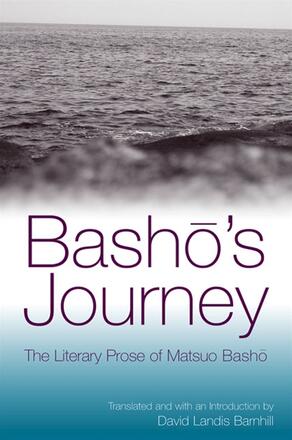
Bashō's Journey
The literary prose of matsuo bashō, alternative formats available from:.
- Google Play
- Amazon Kindle
Read Excerpt View Table of Contents
Request Desk or Examination Copy Request a Media Review Copy
- Share this:
Table of contents
Acknowledgments
Selected Chronology of the Life of Matsuo Basho
Introduction: Basho's Journey
1. Journey of Bleached Bones in a Field
2. Kashima Journal (Kashima kiko)
3. Knapsack Notebook (Oi no kobumi)
4. Sarashina Journal (Sarachina kiko)
5. The Narrow Road to the Deep North (Oku no hosomichi)
6. Saga Diary (Saga nikki)
Selected Haibun
Bibliography
Offers the most comprehensive collection of Basho's prose available, beautifully translated into English.
Description
In Bashō's Journey , David Landis Barnhill provides the definitive translation of Matsuo Bashō's literary prose, as well as a companion piece to his previous translation, Bashō's Haiku. One of the world's greatest nature writers, Bashō (1644–1694) is well known for his subtle sensitivity to the natural world, and his writings have influenced contemporary American environmental writers such as Gretel Ehrlich, John Elder, and Gary Snyder. This volume concentrates on Bashō's travel journal, literary diary (Saga Diary), and haibun. The premiere form of literary prose in medieval Japan, the travel journal described the uncertainty and occasional humor of traveling, appreciations of nature, and encounters with areas rich in cultural history. Haiku poetry often accompanied the prose. The literary diary also had a long history, with a format similar to the travel journal but with a focus on the place where the poet was living. Bashō was the first master of haibun, short poetic prose sketches that usually included haiku.
As he did in Bashō's Haiku , Barnhill arranges the work chronologically in order to show Bashō's development as a writer. These accessible translations capture the spirit of the original Japanese prose, permitting the nature images to hint at the deeper meaning in the work. Barnhill's introduction presents an overview of Bashō's prose and discusses the significance of nature in this literary form, while also noting Bashō's significance to contemporary American literature and environmental thought. Excellent notes clearly annotate the translations.
David Landis Barnhill is Director of Environmental Studies and Professor of English at the University of Wisconsin at Oshkosh. He is the translator of Bashō's Haiku: Selected Poems of Matsuo Bashō and the coeditor (with Roger S. Gottlieb) of Deep Ecology and World Religions: New Essays on Sacred Ground , both also published by SUNY Press.
"Barnhill's approach to translation is straightforward and unfussy, aiming to be as accurate as possible, making his two volumes a highly serviceable compilation. They will be of great value to readers. " — The Japan Times "Read cover to cover, the volume presents the breadth of Basho's prose. If you open it randomly, on almost every page you encounter haunting images of the landscape, village life, and literary culture of Japan. This book inspires us to stop and pay attention to the poetry of the world around us. " — Buddhadharma "…Barnhill reveals the importance of narrative and social contexts in reading Basho. Barnhill's careful translations and notes reveal a poet both independent and pious … Above all, Basho's experience of 'cultured nature' emerges unforgettably. " — The Providence Sunday Journal on Basho's Journey and Basho's Haiku "Barnhill's translations maintain the Japanese originals' direct sparseness, and retain their dramatic sequence, which all too many translations unfortunately and unnecessarily sacrifice. " — Taigen Dan Leighton, cotranslator of Dogen's Pure Standards for the Zen Community: A Translation of Eihei Shingi
The Journey is Home
"Every day is a journey, and the journey itself is home." - Matsuo Basho
Latest Posts

Giving and Receiving

Lessons from a Dog
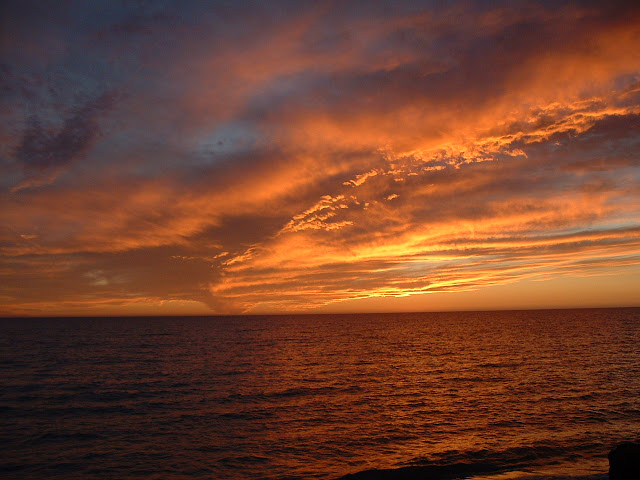
Pausing... by kelly klein
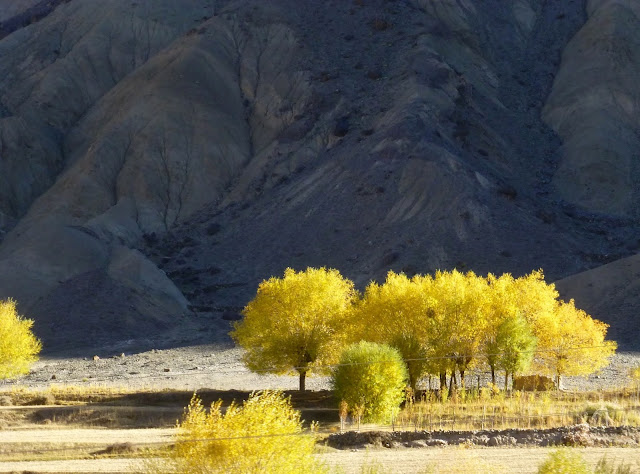
Insights, Plumbing, Death, Sex, and Earthquakes
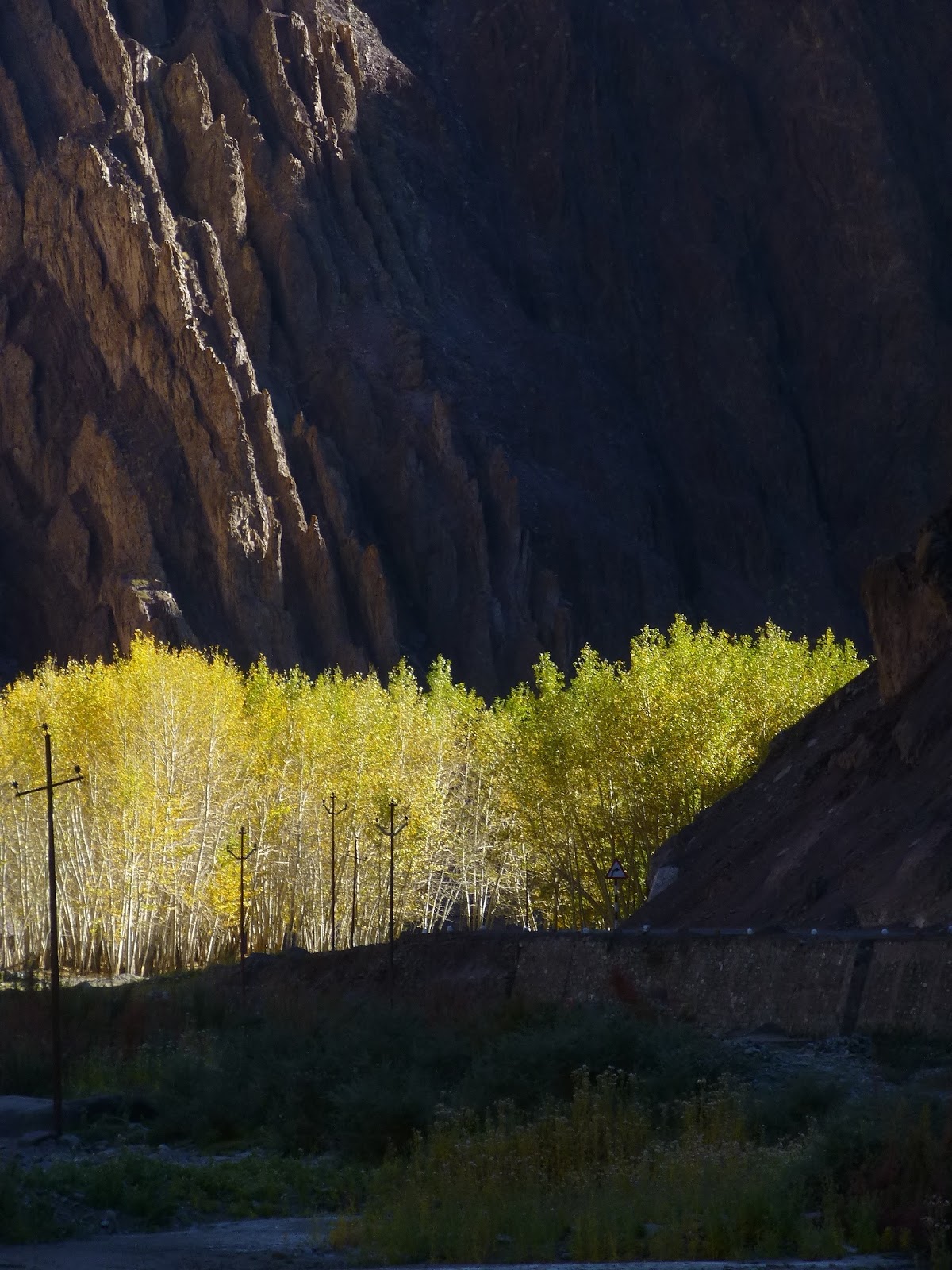
Ladakh - Preparing for Winter and Playing in Mud, by Kelly Klein
- Share full article
For more audio journalism and storytelling, download New York Times Audio , a new iOS app available for news subscribers.

- April 11, 2024 • 28:39 The Staggering Success of Trump’s Trial Delay Tactics
- April 10, 2024 • 22:49 Trump’s Abortion Dilemma
- April 9, 2024 • 30:48 How Tesla Planted the Seeds for Its Own Potential Downfall
- April 8, 2024 • 30:28 The Eclipse Chaser
- April 7, 2024 The Sunday Read: ‘What Deathbed Visions Teach Us About Living’
- April 5, 2024 • 29:11 An Engineering Experiment to Cool the Earth
- April 4, 2024 • 32:37 Israel’s Deadly Airstrike on the World Central Kitchen
- April 3, 2024 • 27:42 The Accidental Tax Cutter in Chief
- April 2, 2024 • 29:32 Kids Are Missing School at an Alarming Rate
- April 1, 2024 • 36:14 Ronna McDaniel, TV News and the Trump Problem
- March 29, 2024 • 48:42 Hamas Took Her, and Still Has Her Husband
- March 28, 2024 • 33:40 The Newest Tech Start-Up Billionaire? Donald Trump.
How Tesla Planted the Seeds for Its Own Potential Downfall
Elon musk’s factory in china saved his company and made him ultrarich. now, it may backfire..
Hosted by Katrin Bennhold
Featuring Mara Hvistendahl
Produced by Rikki Novetsky and Mooj Zadie
With Rachelle Bonja
Edited by Lisa Chow and Alexandra Leigh Young
Original music by Marion Lozano , Diane Wong , Elisheba Ittoop and Sophia Lanman
Engineered by Chris Wood
Listen and follow The Daily Apple Podcasts | Spotify | Amazon Music
When Elon Musk set up Tesla’s factory in China, he made a bet that brought him cheap parts and capable workers — a bet that made him ultrarich and saved his company.
Mara Hvistendahl, an investigative reporter for The Times, explains why, now, that lifeline may have given China the tools to beat Tesla at its own game.
On today’s episode

Mara Hvistendahl , an investigative reporter for The New York Times.

Background reading
A pivot to China saved Elon Musk. It also bound him to Beijing .
Mr. Musk helped create the Chinese electric vehicle industry. But he is now facing challenges there as well as scrutiny in the West over his reliance on China.
There are a lot of ways to listen to The Daily. Here’s how.
We aim to make transcripts available the next workday after an episode’s publication. You can find them at the top of the page.
Fact-checking by Susan Lee .
The Daily is made by Rachel Quester, Lynsea Garrison, Clare Toeniskoetter, Paige Cowett, Michael Simon Johnson, Brad Fisher, Chris Wood, Jessica Cheung, Stella Tan, Alexandra Leigh Young, Lisa Chow, Eric Krupke, Marc Georges, Luke Vander Ploeg, M.J. Davis Lin, Dan Powell, Sydney Harper, Mike Benoist, Liz O. Baylen, Asthaa Chaturvedi, Rachelle Bonja, Diana Nguyen, Marion Lozano, Corey Schreppel, Rob Szypko, Elisheba Ittoop, Mooj Zadie, Patricia Willens, Rowan Niemisto, Jody Becker, Rikki Novetsky, John Ketchum, Nina Feldman, Will Reid, Carlos Prieto, Ben Calhoun, Susan Lee, Lexie Diao, Mary Wilson, Alex Stern, Dan Farrell, Sophia Lanman, Shannon Lin, Diane Wong, Devon Taylor, Alyssa Moxley, Summer Thomad, Olivia Natt, Daniel Ramirez and Brendan Klinkenberg.
Our theme music is by Jim Brunberg and Ben Landsverk of Wonderly. Special thanks to Sam Dolnick, Paula Szuchman, Lisa Tobin, Larissa Anderson, Julia Simon, Sofia Milan, Mahima Chablani, Elizabeth Davis-Moorer, Jeffrey Miranda, Renan Borelli, Maddy Masiello, Isabella Anderson and Nina Lassam.
Katrin Bennhold is the Berlin bureau chief. A former Nieman fellow at Harvard University, she previously reported from London and Paris, covering a range of topics from the rise of populism to gender. More about Katrin Bennhold
Mara Hvistendahl is an investigative reporter for The Times focused on Asia. More about Mara Hvistendahl
Advertisement

IMAGES
VIDEO
COMMENTS
185 quotes from Matsuo Bashō: 'The journey itself is my home.', 'Do not seek to follow in the footsteps of the wise; seek what they sought.', and 'Winter solitude- in a world of one colour the sound of the wind.' ... each day is a journey, and the journey itself is home." ― Basho 65 likes. Like "How I long to see among dawn flowers, the ...
The text is written in the form of a prose and verse travel diary and was penned as Bashō made an epic and dangerous journey on foot through the Edo Japan of the late 17th century. ... Bashō suggests that "every day is a journey, and the journey itself home". The text was also influenced by the works of Du Fu, who was highly revered by Bashō.
A lifetime adrift in a boat, or in old age leading a tired horse into the years, every day is a journey, and the journey itself is home. From the earliest times there have always been some who perished along the road. Still I have always been drawn by wind-blown clouds into dreams of a lifetime of wandering. Coming home from a year's walking ...
Matsuo Basho's Life and Haiku. Each day is a journey, and the journey itself home. Matsuo Bashō was born in 1644 in the town of Ueno to a minor samurai family. While he is best known for his haiku in the West, his travel journals broke ground in Japanese literature. In his teen years, Bashō entered the service of Todo Yoshikiyo, who was ...
Every day is a journey, and the journey itself is home. Matsuo Bashō, Narrow Road to the Interior and other writings, Boston, 2000, p. 3 (Translation: Sam Hamill) 行く春や 鳥啼き魚の 目は泪 yuku haru ya tori naki uo no me wa namida; Spring passes and the birds cry out—tears in the eyes of fishes
Although Matsuo Basho (1644-1694) was certainly a great poet, his true genius only unfolds in his literary prose. The great theme in his prose is the journey, a path through nature, time, spiritual reality, and one's life: "Each day is a journey, the jour ney itself home." This translation has certainly been a journey,
Like the sun and moon which he calls "eternal travelers," Basho is a wanderer. For him, "each day is a journey, and the journey itself is home." Having left his small house and students and throngs of admirers, Basho embraces mujo, or impermanence, in a concrete way—he becomes a traveler; no fixed abode, no fixed "self." Visiting ...
person, each day is a journey, and the journey itself becomes home." Bashō's first home was Ueno, a castle town thirty miles southeast of Kyoto. Born there in 1644, and called Kinsaku as a boy, his samurai name was Matsuo Munefusa; he used at least two other pen names (Tosei, "Green Peach," was a good choice for a not-quite-ripened ...
Like Zen and the Art of Motorcycle Maintenance, Basho's book reveals that the journey itself is the destination. "A lifetime adrift in a boat," Basho writes, "or in old age leading a tired horse into the years, every day is a journey, and the journey itself is home" (3).
In one of its most memorable passages, Bashō suggests that "every day is a journey, and the journey itself home."…"Today thousands of people pilgrimage to Basho's birthplace and burial shrine and travel parts of Bashos Trail. After three centuries his Narrow Road, in print in English and many other languages, still speaks to readers ...
years, every day is a journey, and the journey itself is home. —Bashō: Oku-no-hosomichi B ASHŌ ROSE LONG BEFORE DAWN, but even at such an early hour, he knew the day would grow rosy bright. It was spring, 1689. In Ueno and Yanaka, cherry trees w ere in full blossom, and hu ndreds of
by the mouth, each day is a journey, the journey itself home. Among Ancients, too, many died on a journey. And so I too— for how many years—drawn by a cloud wisp wind, have been unable to stop thoughts of rambling. I roamed the coast, then last fall brushed cobwebs off my river hut. The year too gradu-
Basho recognized the importance of feeling at home and changed his mindset to feel at home anywhere. Every day is a journey, and the journey itself is home. — Matsuo Basho
Matsuo Bashō, Sam Hamill, Stephen Addiss. 4.28. 1,024 ratings140 reviews. Basho is best known in the West as the author of Narrow Road to the Interior , a travel diary of linked prose and haiku that recounts his journey through the far northern provinces of Japan. This volume includes beautiful Japanese-style illustrations by Stephen Addiss.
Matsuo Basho is known for his haiku, poetry consisting of 17 syllables divided into lines of 5, 7, and 5 syllables. However, he is also famous for his travel memoirs, especially The Narrow Road of the Interior. Basho (1644-1694) was the son of a minor samurai and studied poetry, Zen Buddhism, Chinese learning, history, and Japanese literature.He often moved and traveled to teach poetry and to ...
Spring of 1681. It had been eight years since our poet (he was not yet called Matsuo Basho) took the momentous step of moving to Edo. Tired of the noise and the crowds, and wanting peace and quiet, he moved to rural Fukagawa, to a simple cottage. There to study and think, to become someone new.
Top 10 Most Famous Matsuo Basho Quotes (BEST) "The moon and sun are travelers through eternity. Even the years wander on. Whether drifting through life on a boat or climbing toward old age leading a horse, each day is a journey, and the journey itself is home.". Matsuo Basho. Do not seek to follow in the footsteps of the wise; seek what ...
Summer grasses, all that's leftafter great soldiers' imperial dreams. eternity. Even the years wander on. Whether. journey, and the journey itself is home. Basho walks across the plain where a great battle once raged. Only empty fields remain. The landscape reminds him of a poem by Tu Fu (712-720), in which the T'ang poet surveyed a similar ...
In these wonderful lines from Narrow Road to the Interior, Matsuo Basho, the celebrated 17th century Japanese poet and haiku master, has reminded us that home is not the destination of our journey; it is the journey itself.With a philosophy rooted in Taoism and Zen, Basho understood that life can only be lived when one is fully awake, fully aware, and fully invested in the mystery and glory of ...
Description. In Bashō's Journey, David Landis Barnhill provides the definitive translation of Matsuo Bashō's literary prose, as well as a companion piece to his previous translation, Bashō's Haiku.One of the world's greatest nature writers, Bashō (1644-1694) is well known for his subtle sensitivity to the natural world, and his writings have influenced contemporary American environmental ...
The Journey is Home "Every day is a journey, and the journey itself is home." - Matsuo Basho Ladakh Home; Peru; Ladakh; Bolivia;
37 likes, 0 comments - dunblane.equestrianFebruary 28, 2024 on : "Every day is a journey, and the journey itself is home. - Matsuo Basho #TheDunblaneExperience #TheDunblaneJourney #thenandnow #journey".
66 likes, 1 comments - binko____04September 22, 2023 on : ". The journey itself is my home. ~Basho"
Featuring Mara Hvistendahl. Produced by Rikki Novetsky and Mooj Zadie. With Rachelle Bonja. Edited by Lisa Chow and Alexandra Leigh Young. Original music by Marion Lozano , Diane Wong , Elisheba ...